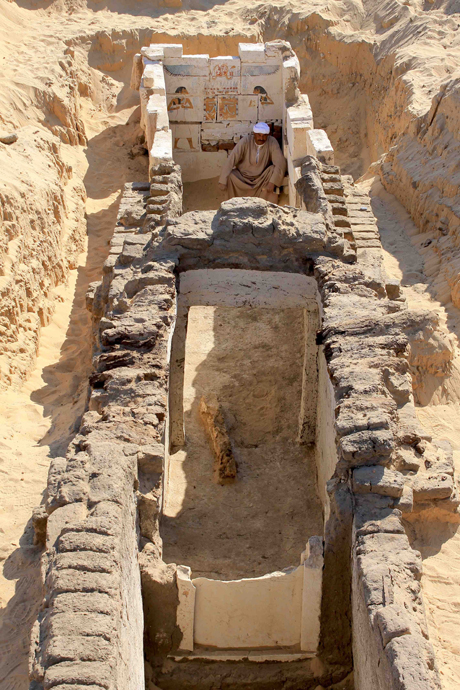 An American excavation mission from the University of Pennsylvania uncovered the name of an ancient Egyptian king from the Abydos dynasty
during the second Intermediate Period (1650 BC) during routine
excavations south of Abydos archaeological site.
According to a statement by the Ministry of State of Antiquities (MSA),
the name of the king is Sneb-Kay. His name was found on Tuesday
engraved on a wall of his tomb.
An American excavation mission from the University of Pennsylvania uncovered the name of an ancient Egyptian king from the Abydos dynasty
during the second Intermediate Period (1650 BC) during routine
excavations south of Abydos archaeological site.
According to a statement by the Ministry of State of Antiquities (MSA),
the name of the king is Sneb-Kay. His name was found on Tuesday
engraved on a wall of his tomb.The discovery shed more light on Abydos local families that ruled the nome during the Second Intermediate Period, considered one of the most critical phases of ancient Egyptian history. Joseph Wagner, head of the American mission, stated that the tomb neighbours the tomb of King Subek Hotep of the 13th dynasty and the newly discovered tomb can be dated to a dynasty called Abydos mentioned by archaeologist K.Rhyholt, although the ruling tenure of the king is still a mystery. He added that the poor state of the tomb shows that Egypt was suffering bad economic conditions.
Ali El-Asfar, head of the ancient Egyptian Section at the MSA, said that the tomb was built with blocks previously used in tombs of the Middle Kingdom. Remains of a wooden sarcophagus still bearing the king's skeleton were also found. The skeleton of Pharaoh Senebkay was originally mummified but his body was pulled apart by ancient tomb robbers.


.jpg)


No comments:
Post a Comment